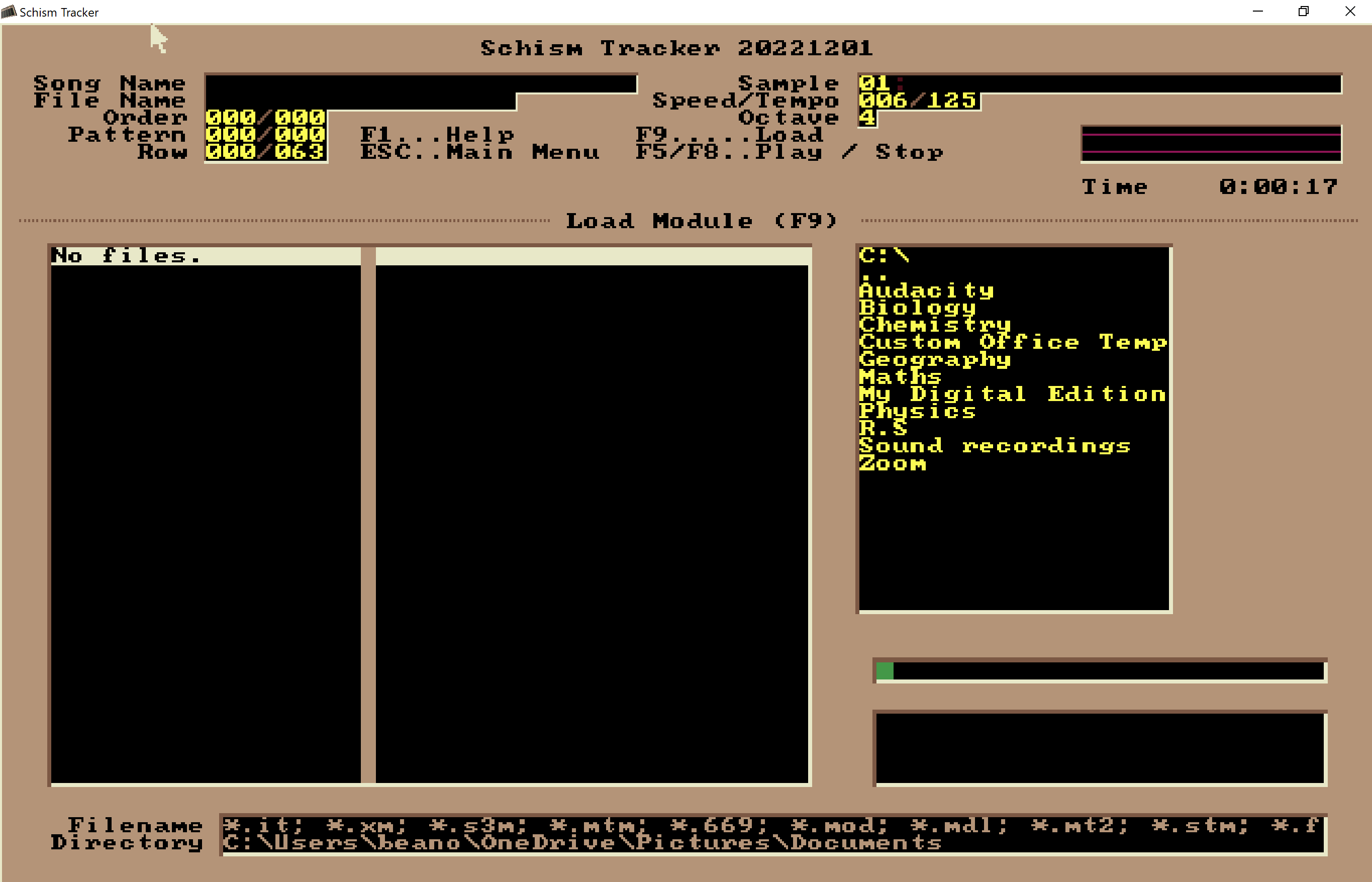By Benji Chapman, First Year English and Philosophy
C418, or Daniel Rosenfeld, found his start in the music world making chiptune songs on the program Schism Tracker. Like so many artists, Rosenfeld made the most of increased accessibility to make electronic music that programs like Schism Tracker offered - a free knockoff of other digital multi-track music trackers that became available in the 90s.
The originally DOS-based program is famous for its extremely basic UI, and has been used to make chiptune and other electronic music as well as early jungle and garage tunes. The software definitely now has a dated feel; users have to create their own samples and instruments within the software before passages are laboriously programmed into patterns of the artists' creation. Almost thirty years on since the program's release in 1995, the open-source software is still available for free and now runs on almost any laptop. The software is largely unchanged since its release, even retaining its ability to import samples from floppy disks.
The UI of Schism Tracker is almost inductively connected to Rosenfled's most famous work, the original Minecraft soundtrack. Schism Tracker's heavily pixelated, 8-bit interface is structured much like the blocky world of Minecraft itself. Rosenfeld has continued to work closely with the creators of the game from 2009, 2 years before Minecraft's release, to produce the sound effects and of course the now hallowed Volume Alpha: Minecraft's first soundtrack.

Volume Alpha has gathered a following separate from the game itself, garnering a cult-like fanbase among electronic and ambient music fans. The album is legendary in its capability to produce a sense of awesome scale for the listener; its melodies are gentle, soothing even, but equally, entice a feeling of wonder and space. Though most tracks make use of soft synths and pads, a piano is also a frequently used instrument - there's a clear homage to Rosenfeld's chiptune days in the cutesy "music disc" tracks that are featured on the album.
All of Volume Alpha and its sequel Volume Beta were produced on Ableton Live, but it's clear that Rosenfeld came to the program a better musician thanks to his days on Schism Tracker. As he says, "even an idiot" can make music on Ableton Live, but the rudimentary programming on Schism Tracker demands a level of diligence as a musician.
On Schism Tracker, everything must be produced and articulated by the artist; there are no pre-packaged sequences or sounds. The musician must build their work from the ground up. Rosenfeld's skill is in his ability to create extensively varied songs; there are gentle, muted steelpans in the opening 'Aria Math' that are reminiscent of traditional Caribbean carnival music before the song opens up into a crescendo as if the instruments have proceeded into a great cavern, lead by variations of the main theme carried by piano, artificial strings and wobbling synths.
His music is a fusion of so many genres, and creatively sources its samples. the song 'Droopy Likes Your Face' (which features on both Volume Alpha and his EP 26) takes its main instruments from the read-along children's book The Droopy Dragon. The choice of sample instils a sense of safety, reminding the listener of a nostalgic, simpler time that pairs excellently with the game's simplistic and child-friendly game design. Like so much of his music though, Rosenfeld isn't afraid to divert towards his more danceable influences; the title track of 26 follows a thumping drum-beat while 'Minecraft is Acid' uses Aphex-Twin-like glitchy breakbeats and abrasive synth stabs far removed from the gentler lullabies of Volume Alpha and Beta.
Daniel has worked less on Minecraft's soundtracks over the years, although EPs have been released here and there, whilst composers such as Lena Raine have taken the mantle to release lengthier projects alongside the game's continual updates. He continues to release music and DJ across various locations, with his work standing the test of time as the cornerstone of any ambient and electronic fan; all from a musician who found his start making chiptune on a piece of free software in the 90s.
Featured image: C418, Mojang
Did you know about Schism Tracker?








